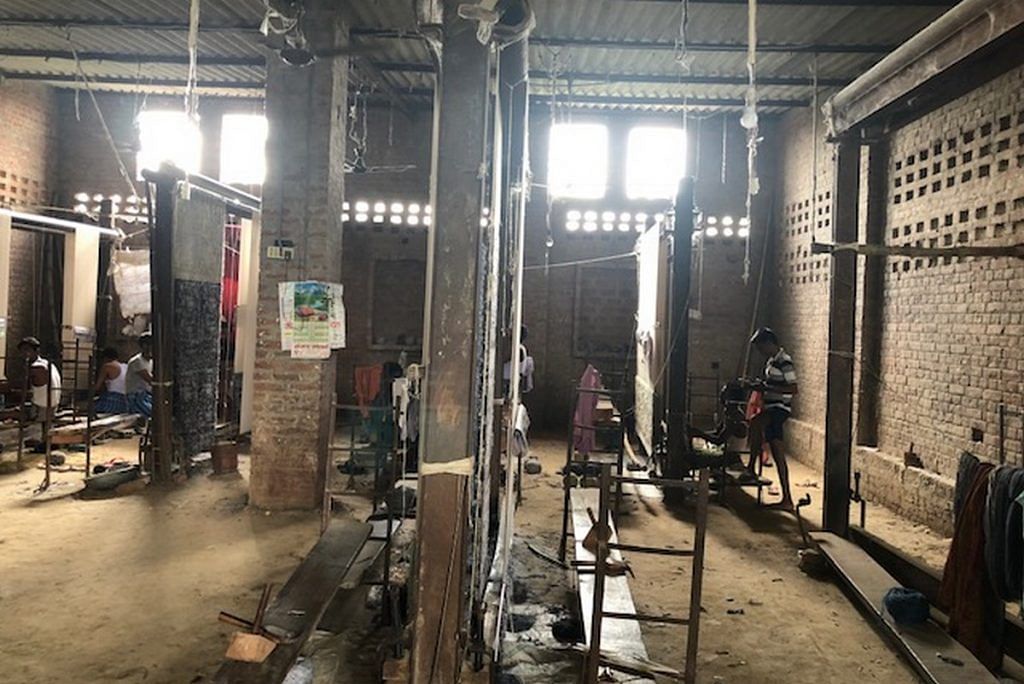Around three lakh people are directly involved in the carpet industry in the Bhadohi-Varanasi region, but are suffering due to a frightening slump.
Bhadohi/Gopiganj: There was once a thriving carpet industry in eastern Uttar Pradesh. Now, all you can see are locked looms, sparsely-populated dyeing plants, and half-empty factories.
This highly labour-intensive industry has been hit hard by demonetisation, the complexities of the new Goods and Services Tax (GST) regime, and the larger economic slowdown. It is witnessing a frightening slump, with massive job cuts defining the distress.
Industry insiders in this region say the carpet industry in India is worth around Rs 3,000-4,000 crore, of which more than two-thirds comes from the Bhadohi-Mirzapur-Varanasi-Gopiganj-Khamaria belt.

Given the highly labour-intensive nature of work, they say around three lakh people in this region are directly involved in this industry, while many others are indirectly dependent on it. The various steps involved – carding the yarn, dyeing/procession, designing/tracing etc., weaving, and then finishing as well as packing – are all primarily manual, requiring a large number of workers.
Thus, a slump in this industry ends up significantly affecting employment in each of these links of the chain.
Official acknowledgement of slowdown
While the slowdown has been visible to the eye in various parts of the country visited by ThePrint, now there is official recognition of it too. The recently-formed Economic Advisory Council (EAC) to the Prime Minister, in its first meeting, acknowledged the slowdown, identifying 10 areas for accelerating growth, with monetary policy and job creation reportedly among the most important.
But how long it will take for these macro decisions to trickle down to the micro level remains to be seen.
Different shades of despair
Saroj Kumar and Upinder Sharma are among a group of eight weavers focussing on their craft of Indo-Tibetan style carpets in a loom in Bhadohi, well known as India’s ‘carpet city’. Beyond them lie a number of locked looms, forced to shut down post demonetisation.
Kumar and Sharma came to work here from Saharsa in Bihar about five to six years ago, but are now concerned about their jobs.
“The carpet business here has dried up after demonetisation and now GST. We get such few orders now, barely half of what we did earlier. We used to easily earn around Rs 400 a day until last year, but now it’s just Rs 200,” Kumar says.
Sharma adds with an air of sadness: “There were some 15 to 20 people here who had come from Bihar. Now only four or five are left. Others had to return home after the work dried up.”
*****
A few kilometres away, there’s another loom specialising in hand-tufted carpets. But there too, the story is no different, according to Sujeet Kumar, who is busy designing a carpet with an electric gun.
“In the last six months, work has reduced; the rates we get have halved. So many people around here have lost their jobs, even in this loom,” says Kumar.
*****
In Gopiganj, Ramesh Mishra, who owns Apeksha Carpets, says more than demonetisation, it is GST which has hit his business.
“We could barely recover from demonetisation, then the government brought in GST. It is so complicated and the frequent changes just bog us down,” Mishra says.
“Earlier, this industry, including my company, gave employment to so many people. Each carpet here takes three to four months to be completed, so imagine how many people get work. But now, our business, and thus, employment, have more than halved. One hundred people worked here; I now have only 40-odd,” he adds.
*****
Faiyyaz Ahmed’s story perhaps most poignantly encapsulates this distress. Ahmed, in his mid-thirties, earlier ran 25 looms as a sub-contractor, taking orders from bigger companies. After demonetisation struck, companies could not pay him, and he, in turn, could not pay his workers. This forced him to shut all his looms and seek work in a carpet company.
“I would say around 70 per cent of the business in this region is gone. Of the looms that have shut down, I think 40 per cent will not be able to start operations again. My looms were among these. Now I work in a company called People’s Carpets,” Ahmed says in despair.
*****
At a dyeing plant in Bhadohi, we meet a visibly-agitated Aasman Bano. “There were 20-25 workers here earlier, now see there are only around five,” she complains.
“Modiji’s demonetisation and this new tax have ruined everything.”







I am hearing the similar type of article for more than three decade from different reporters ,but surprise how come this industry is still living and surviving.
Surprise how come our country is still living and surviving…